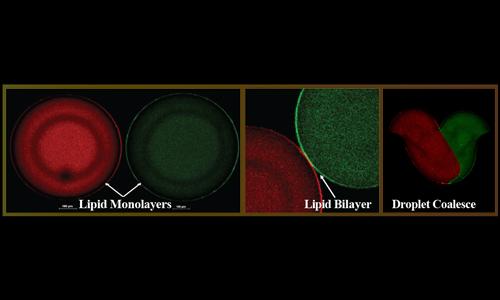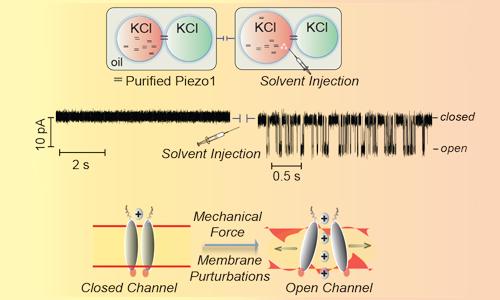Many of life's vital functions take place at the cell membrane, such as the uptake of nutrients, cellular communication, signal transduction, invasion of pathogens, amongst others. Cell membranes act as biological barriers, but our understanding of their function and interactions with embedded proteins is limited. My lab's focus is to develop novel tools aimed at understanding ion channel physiology and molecular mechanism in an isolated membrane environment.
Several diseases are a direct result of faulty ion channels and receptors that span cell membranes. Our long-term research aims are to develop techniques incorporating high-throughput screening and to decipher ion channel mechanisms in neuropathic pain, epilepsy, blood disorders, stroke, and ischemia.
The lab's immediate focus is on mechano-transduction, the process by which cells convert mechanical stimulus into electrical and chemical response. We are interested in the unique mechanosensitive channel called PIEZO. Piezos are large proteins (~900 kilodalton) that responds to sheer stress, stretch and mechanical perturbations in the cell's membrane.
A second focus of the lab is to explore the role of volume regulation and osmosensing mechanisms at a molecular level. Currently, we study volume-regulated anion channels termed SWELL1 to elucidate how cells avoid bursting or shrinking and maintain their integrity.
We apply molecular and modular approaches to comprehend intricate cellular processes. The lab utilizes biochemical and pharmacological tools, electrophysiology, and single molecule analysis to address hypothesis-driven questions.
 Formation of Droplet Lipid Bilayers
Formation of Droplet Lipid Bilayers  Activation of Mechano-sensitive Piezo Channels
Activation of Mechano-sensitive Piezo Channels  Expression, Purification and Single-Channel Analysis of Volume-Regulated Anion Channels
Expression, Purification and Single-Channel Analysis of Volume-Regulated Anion Channels